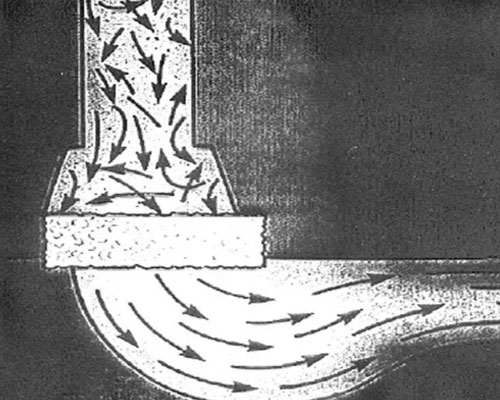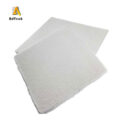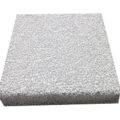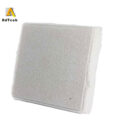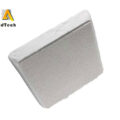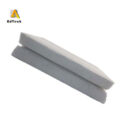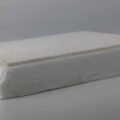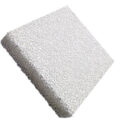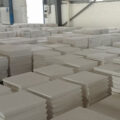The mechanism of ceramic filter system purification includes three aspects:
One is interception and blocking. Generally, large inclusions are easily captured by the filter inlet. With the passage of a certain amount of metal melt, a filter cake will be formed on the surface of the filter inlet, and the flow rate of the melt through the ceramic filter will be significantly reduced thereafter. At the same time, as the inner diameter of the inlet decreases, the probability of interception of smaller-sized inclusions increases, and the removal efficiency of small-sized inclusions increases.
The second is adsorption. Interception and blocking are physical methods to filter out inclusions, which are effective for inclusion particles above 50μm, while small particles below 40μm need to be removed with the help of an adsorption mechanism. The inclusion is driven by the liquid flow to approach the wall of the filter. Because the two infiltrate and adhere to each other, usually the inclusion and the molten metal are not infiltrated, especially the smaller the particle size of the inclusion, the worse the wettability. Once the inclusions are in contact with the filter surface with relatively better wettability, it is easy to break away from the molten metal and be adsorbed by this surface. If the pores of the filter are smaller, the filter channel is longer, and the flow rate is slow enough, the more likely the inclusions in the molten metal will move to the inner wall of the filter, that is, the higher the efficiency of the inclusions being captured by the filter.
The third is the rectification effect. The rectifying ability of the ceramic filter system makes the molten metal, which originally has a strong turbulent flow, in a laminar flow state when flowing through the filter. After flowing through the filter, to restore the original turbulent state, a longer transition zone is required. In the transition zone, the liquid flow has not yet developed into a stable turbulent state or in a smaller turbulent flow zone, which avoids the secondary oxidation of the molten metal and the erosion of the mold, thus playing an obvious slag blocking effect. That is why the metal mesh and the core filter also have a better effect of purifying metal.

In addition, different purification methods lead to different relationships between the melt and the purification medium:
(1) No purification medium: inclusions can be removed by their own movement.
(2) The purification medium moves and the melt is static: such as gas and flux refining, the mass transfer process of inclusions is promoted by the movement of the purification medium, and the efficiency of impurity removal is improved.
(3) The melt is moving and the purification medium is static: such as the filtration method, the flow of the melt shortens the distance required for the mass transfer process and improves the efficiency of impurity removal.

